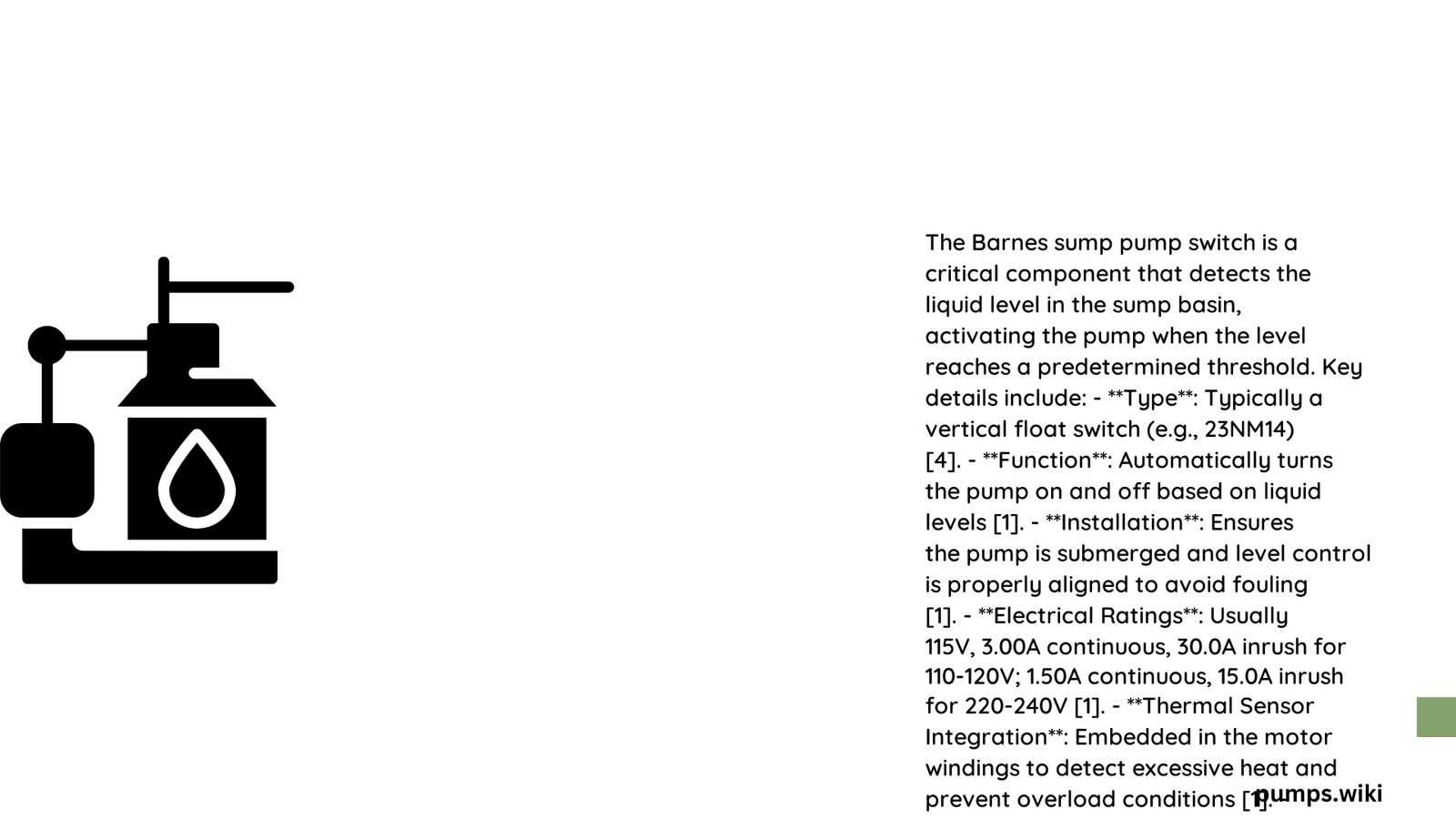A Barnes sump pump switch is a critical component in managing water drainage, providing automated control for submersible pumps in residential and commercial settings. This essential device monitors water levels, activating the pump when liquid reaches a predetermined height and preventing potential flooding. Understanding its functionality, installation, and maintenance can significantly enhance your drainage system’s efficiency and protect your property from water damage.
What Are the Specific Installation Requirements for Barnes Sump Pump Switch?
Tools and Materials Preparation
Before beginning installation, gather the following essential tools:
- Adjustable wrench
- Screwdriver
- Pliers
- Wire strippers
- Junction box
- Mounting bracket
- Pipe mounting strap
Step-by-Step Installation Process
- Mounting Location Selection
- Choose a stable mounting point on sump wall
- Ensure unobstructed float movement
-
Verify complete pump submersion during operation
-
Electrical Connection Guidelines
- Follow National Electric Code standards
- Use appropriate junction box
-
Avoid modifying original cord assembly
-
Float Configuration
- Position float to maintain liquid level above motor housing
- Adjust cord length using cable clamp
- Test float movement before final installation
How to Troubleshoot Common Barnes Sump Pump Switch Issues?

Diagnostic Techniques
| Symptom | Potential Cause | Recommended Action |
|---|---|---|
| Switch Not Activating | Restricted Float | Check movement, clear obstructions |
| Insufficient Pump Capacity | Incorrect Sizing | Verify pump specifications |
| Electrical Malfunction | Wiring Problems | Inspect connections, test switch |
Troubleshooting Steps
- Manually test switch using ohmmeter
- Verify voltage compatibility
- Inspect discharge line for restrictions
- Check for potential air locks
What Are Compatibility Considerations for Barnes Sump Pump Switch?
Technical Specifications
- Voltage: Single-phase 240V AC, 60Hz
- Float Types:
- “A” version: Pump-attached
- “AU” version: Discharge hose attachment
- Configuration Options:
- Wide-angle float
- Piggy-back plug variants
How to Select Replacement Parts?
Replacement Part Selection Criteria
- Verify exact model compatibility
- Consult manufacturer’s installation manual
- Source from authorized distributors
- Match electrical specifications precisely
Recommended Replacement Process
- Identify exact part number
- Verify electrical compatibility
- Follow manufacturer’s installation guidelines
- Perform comprehensive system testing
Safety Precautions and Best Practices
- Electrical Safety
- Always disconnect power before maintenance
- Use proper personal protective equipment
-
Follow local electrical codes
-
Maintenance Recommendations
- Perform annual switch inspection
- Clean float mechanism regularly
- Check wiring connections periodically
Expert Tips for Optimal Performance
- Maintain proper water level calibration
- Use manufacturer-recommended replacement parts
- Schedule professional inspections
- Keep detailed maintenance records
Conclusion
Understanding your Barnes sump pump switch’s intricacies ensures reliable water management and prevents potential drainage issues. Regular maintenance, proper installation, and timely troubleshooting are key to long-term system performance.
